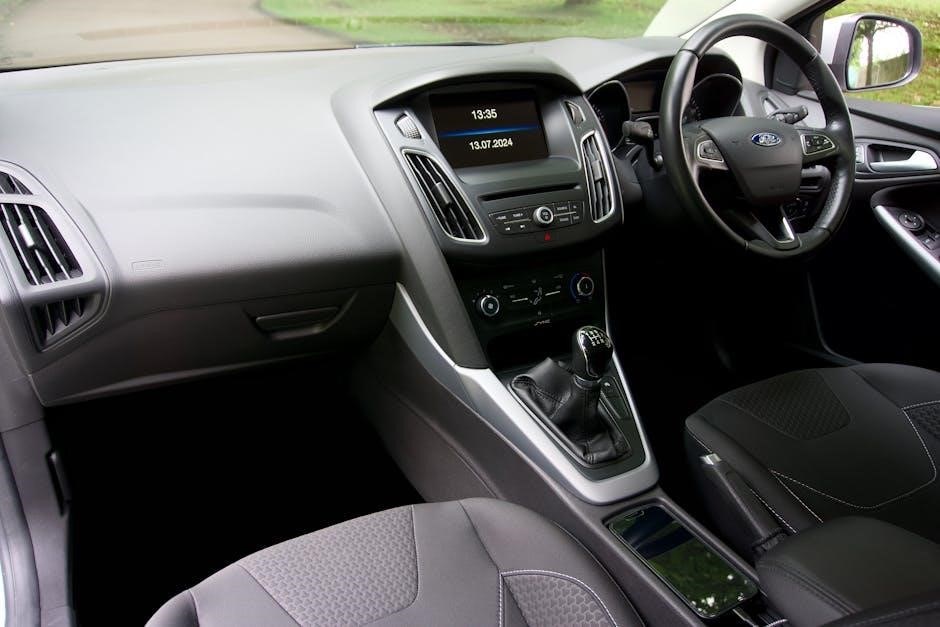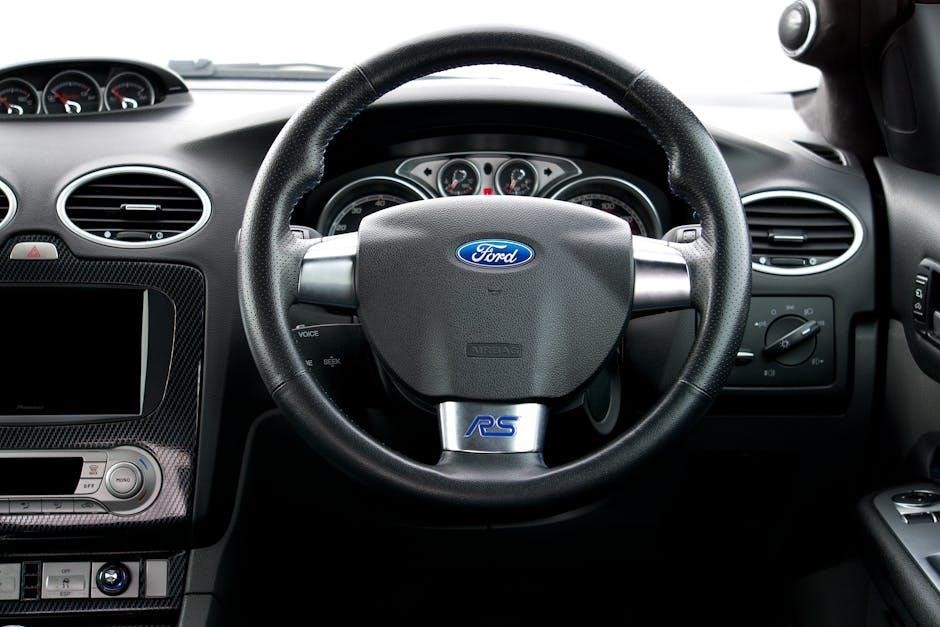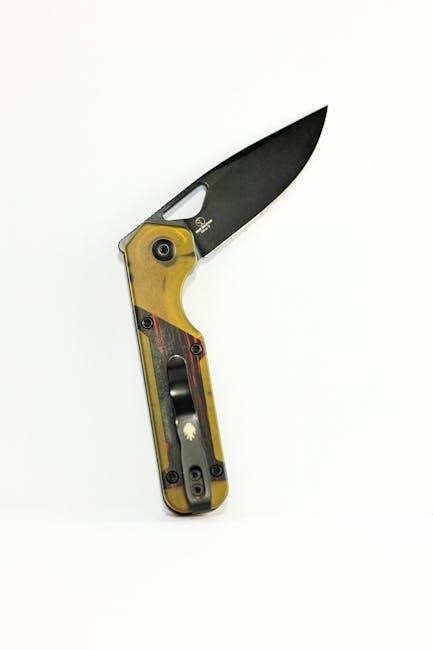manual ford edge 2013

This manual is a comprehensive resource for understanding and maintaining your 2013 Ford Edge․ It provides essential information on maintenance, repairs, and electrical systems, ensuring you can handle tasks confidently․ Whether you’re a DIY enthusiast or a professional, this guide offers detailed instructions to keep your vehicle in top condition․ Explore the key features, troubleshooting tips, and expert advice to maximize your driving experience and maintain your Ford Edge’s performance․
1․1 Overview of the 2013 Ford Edge
The 2013 Ford Edge is a mid-size crossover SUV designed for versatility and comfort․ It features a powerful 3․5L V6 engine, optional all-wheel drive, and advanced technologies like SYNC infotainment․ Available in trims such as SE, SEL, and Limited, the Edge offers a blend of style, functionality, and performance․ With its spacious interior, modern design, and robust capabilities, the 2013 Ford Edge is a reliable choice for both daily commuting and family adventures, making it a popular vehicle in its class․
1․2 Importance of the Owner’s Manual
The owner’s manual for the 2013 Ford Edge is essential for understanding vehicle operation, safety features, and maintenance requirements․ It provides detailed instructions for optimizing performance, troubleshooting common issues, and ensuring proper care․ By following the manual, drivers can avoid potential errors, prolong the vehicle’s lifespan, and maintain warranty compliance․ It also serves as a guide for DIY repairs and offers insights into advanced features, making it an indispensable resource for both new and experienced owners to maximize their driving experience and keep their Edge in peak condition․
1․3 Key Features of the 2013 Ford Edge
The 2013 Ford Edge offers a blend of style, technology, and performance․ It features a powerful 3․5L V6 engine, optional EcoBoost, and a smooth 6-speed automatic transmission․ The Edge includes advanced tech like SYNC with MyFord Touch, a premium audio system, and a rearview camera․ Safety highlights include seven airbags, electronic stability control, and blind-spot monitoring․ Its sleek design, spacious interior, and versatile cargo space make it ideal for both daily commuting and family adventures, providing a comfortable and connected driving experience․

Maintenance and Servicing
Regular maintenance ensures optimal performance and longevity․ Follow the manual’s guidelines for oil changes, tire rotations, and inspections․ Addressing issues promptly prevents costly repairs and enhances efficiency․
2․1 Recommended Maintenance Schedule
The 2013 Ford Edge manual outlines a detailed maintenance schedule to ensure optimal performance․ Regular services are recommended at intervals of 5,000 to 7,500 miles, including oil changes, tire rotations, and inspections․ Additionally, the manual advises checking air filters, belts, and fluid levels at specific mileage markers․ Following this schedule helps prevent mechanical issues, improves fuel efficiency, and ensures long-term reliability․ Proper adherence also covers battery checks and brake inspections, ensuring safety and performance․ Always refer to the manual or consult a professional for precise guidance tailored to your vehicle’s needs․
2․2 Oil Change and Fluid Requirements
The 2013 Ford Edge manual specifies that regular oil changes are essential for engine longevity․ Use synthetic blend oil (5W-20) for optimal performance․ Oil changes are typically recommended every 5,000 to 7,500 miles, depending on driving conditions․ Fluid levels, including coolant, transmission, and brake fluids, should be checked during routine maintenance․ Always use Ford-approved fluids to ensure compatibility․ Proper lubrication and fluid management prevent overheating, corrosion, and premature wear․ Refer to the manual for specific guidelines or consult a certified technician for accurate service recommendations․
2․3 Tire Pressure and Rotation Guidelines
The 2013 Ford Edge manual recommends checking tire pressure monthly and before long trips․ Use the specifications listed on the tire information placard or in the manual, typically 35-40 PSI for most models․ Rotate tires every 5,000 to 8,000 miles to ensure even tread wear and improved safety․ Use the rearward cross or front-to-rear pattern, depending on drivetrain type (FWD or AWD)․ Proper balancing and alignment should follow rotation to maintain stability and handling performance․ Always refer to the manual for precise guidelines or consult a certified technician․
2․4 Brake Service and Inspection
The 2013 Ford Edge manual advises regular brake inspections every 10,000 to 15,000 miles․ Inspect brake pads for wear (minimum 1/8 inch thickness) and rotors for scoring or excessive wear․ Check brake fluid levels and top off as needed, ensuring the correct Ford-specified fluid type is used․ Replace worn pads and resurface or replace rotors if necessary․ Address any brake fluid leaks promptly to prevent system failure․ Always follow proper bleeding procedures after fluid changes․ Consult a certified technician for complex repairs to ensure safety and optimal braking performance․
2․5 Battery Maintenance Tips
For the 2013 Ford Edge, proper battery care ensures reliable starting and electrical system performance․ Check terminals regularly for corrosion and clean them with a wire brush if necessary․ Avoid overcharging, as it can reduce battery life․ Keep connections tight and secure․ Test battery voltage annually (12;4V-12․7V when charged)․ Inspect cables for damage or fraying․ Store the vehicle in a cool, dry place if unused for extended periods․ Replace the battery every 5-7 years or when capacity drops below 80%․ Always use the correct Ford-specified battery type for optimal performance․

Common Repairs and Issues
Common repairs for the 2013 Ford Edge include addressing engine stalling, faulty sensors, and transmission issues․ Regular inspections help prevent these problems, ensuring optimal performance․
3․1 Diagnosing Starting System Faults
Diagnosing starting system faults in the 2013 Ford Edge involves checking the battery, starter motor, and ignition switch․ Test the battery voltage and connections for corrosion․ Inspect the starter solenoid and ignition coil for wear․ Use a multimeter to verify electrical connections and consult the wiring diagram in the manual․ If issues persist, scan for error codes using an OBD-II reader․ Addressing these problems early prevents further damage and ensures reliable starting performance․
3․2 Fixing Brake Problems
Fixing brake issues in the 2013 Ford Edge starts with inspecting worn pads, rotors, or fluid leaks․ Replace brake pads if they are below the minimum thickness specified in the manual․ Resurface or replace rotors if warped․ Check the brake fluid level and top it off if low․ Inspect hoses for cracks and replace if necessary․ Bleed the brake system to remove air bubbles․ Always refer to the factory service manual for torque specifications and proper procedures to ensure safety and reliability․ Addressing brake problems promptly is critical for vehicle safety․
3․3 Addressing Fluid Leaks
Identify fluid leaks by inspecting common areas like engine gaskets, hoses, or seals․ Use UV dye in coolant, transmission, or brake systems for harder-to-spot leaks․ Once located, clean the area thoroughly․ Replace damaged gaskets, hoses, or seals with OEM parts․ Tighten connections if loose․ Refer to the owner’s manual for torque specifications․ Minor leaks can often be fixed with sealants, but severe issues may require professional attention․ Regular inspections can prevent fluid leaks and costly repairs․
3․4 Solving Multimedia Connectivity Issues
For multimedia connectivity issues in your 2013 Ford Edge, start by restarting the system․ Check Bluetooth settings to ensure proper pairing of devices․ Verify USB port functionality by testing with another device․ Update SYNC software to the latest version for compatibility․ Reset the system by disconnecting the battery for 30 minutes․ If issues persist, consult the owner’s manual or contact a Ford technician․ Ensure all devices meet SYNC compatibility requirements for optimal performance․
3․5 Rebuilding the PCM for V6 Engines
To rebuild the Powertrain Control Module (PCM) for your 2013 Ford Edge V6 engine, start by disconnecting the battery․ Locate the PCM, typically found on the passenger side․ Carefully remove the PCM and open it by removing the screws․ Inspect for faulty components like capacitors or relays and replace them․ Update the PCM software using a Ford-approved tool․ Reinstall the PCM, reconnect the battery, and test the system․ If unsure, consult a professional technician for assistance to avoid further damage․
Troubleshooting Guide
This section helps identify and resolve common issues using warning lights, error codes, and DIY fixes․ Learn when to use tools like OBD-II scanners or consult professionals․
4․1 Identifying Warning Lights
The 2013 Ford Edge features a comprehensive dashboard warning system․ Each light represents a specific issue, such as engine problems, low oil pressure, or battery malfunction․ Red lights indicate critical issues requiring immediate attention, while yellow or orange lights signal less urgent concerns․ Blue or green lights typically indicate normal system operations, like high beams or cruise control․ Always consult the owner’s manual or a professional to interpret and address illuminated warnings accurately․ This ensures timely repairs and prevents potential damage to your vehicle․ Regular checks can help identify issues early․
4․2 Common Error Codes and Solutions
The 2013 Ford Edge may display error codes like P0171 (system too lean) or P0300 (random misfire)․ These codes indicate issues such as faulty oxygen sensors, vacuum leaks, or ignition coil problems․ Solutions often involve replacing sensors, tightening connections, or updating engine software․ Always use an OBD-II scanner to retrieve codes and consult the manual for specific repair steps․ Addressing these issues promptly prevents further damage and ensures optimal vehicle performance․ If unsure, consult a certified mechanic for assistance․ Regular diagnostics help maintain your Edge’s reliability and efficiency․
4․3 DIY Fixes for Minor Issues
Minor issues like a faulty air filter or low coolant can often be resolved with DIY fixes․ Replacing the air filter improves fuel efficiency and performance․ Topping off fluids, such as windshield washer or coolant, is straightforward․ For battery issues, cleaning terminals with a wire brush and baking soda solution can restore connectivity․ Loose connections or blown fuses may cause electrical problems, which can be easily checked and replaced․ Always consult the manual for guidance․ If unsure, seek professional assistance to avoid further damage․ Regular DIY checks can prevent major repairs and keep your Edge running smoothly․
4․4 When to Consult a Professional
If you encounter complex issues like transmission problems, electrical system malfunctions, or advanced diagnostics, it’s best to consult a professional․ Transmission issues, such as slipping gears or loss of power, require specialized tools and expertise․ Similarly, electrical system problems involving the PCM or wiring should be handled by a certified technician․ For advanced diagnostics or safety-critical repairs, like airbag system faults, professional assistance is essential to ensure safety and reliability․ DIY attempts in these areas could lead to further damage or safety risks․

Electrical and Wiring Systems
The 2013 Ford Edge’s electrical and wiring systems are complex, controlling everything from lighting to advanced safety features․ Proper maintenance and professional diagnostics are crucial for reliability and safety․
5․1 Understanding the Electrical Wiring Diagram
The electrical wiring diagram for the 2013 Ford Edge is a detailed schematic that illustrates the vehicle’s electrical circuits․ It includes color-coded wires, connectors, and components, making it easier to trace and diagnose issues․ This diagram is essential for repairs, as it provides a visual guide to understanding how systems like lighting, infotainment, and safety features are interconnected․ By referencing the wiring diagram, technicians and DIYers can identify faulty circuits, plan custom installations, and ensure proper electrical system functionality․ Always use the official Ford wiring diagram for accuracy and reliability․
5․2 Troubleshooting Electrical Repairs
Troubleshooting electrical repairs in the 2013 Ford Edge involves identifying and isolating faults in the wiring, connectors, or components․ Common issues include blown fuses, faulty sensors, or corroded connections․ Start by consulting the wiring diagram to trace circuits․ Use a multimeter to test voltage and continuity․ Symptoms like flickering lights or non-responsive controls can indicate loose wires or failed relays․ Always disconnect the battery before working on electrical systems to prevent shocks or damage․ If issues persist, refer to the Ford diagnostic system or consult a professional for advanced troubleshooting․ Regular inspections can prevent electrical failures and ensure reliability․
5․3 Repairing Circuit Boards
Repairing circuit boards in the 2013 Ford Edge requires precision and care․ Start by identifying the faulty component using diagnostic tools․ Soldering damaged connections or replacing malfunctioning chips may resolve issues․ Use a multimeter to test for short circuits or open connections․ Clean corroded terminals with a soft brush and electrical cleaner․ Always disconnect the battery before working on circuit boards to avoid power surges․ If repairs are complex, consult a professional or consider replacing the board entirely․ Proper insulation and testing are crucial to ensure reliable operation after repairs․
Engine and Transmission
The 2013 Ford Edge features a 3․5L V6 engine, delivering robust performance and efficiency․ Paired with a 6-speed automatic transmission, it ensures smooth acceleration and responsive handling, optimizing fuel economy for both city and highway driving․
6․1 Engine Diagnostics and Repair
The 2013 Ford Edge’s engine diagnostics involve using OBD-II scanners to identify fault codes․ Common issues include misfires, vacuum leaks, or faulty sensors․ Symptoms like rough idling or reduced performance signal potential problems․ Repairs often require checking the PCM for error codes and addressing wiring or component failures․ Regular maintenance, such as spark plug replacements, can prevent major issues․ Always refer to the factory manual for specific repair procedures and ensure proper tools are used for accurate diagnoses and reliable fixes to maintain optimal engine performance and longevity․
6․2 Transmission Service and Maintenance
Regular transmission service is vital for the 2013 Ford Edge to ensure smooth gear shifts and prevent premature wear․ Check the transmission fluid level monthly, using the dipstick, and replace it every 30,000 to 60,000 miles․ Use Ford-approved MERCON LV fluid for optimal performance․ Inspect for leaks around the pan gasket and lines․ If slipping or delayed engagement occurs, have the system checked promptly․ Avoid aggressive driving habits that strain the transmission․ Refer to the owner’s manual for specific service intervals and guidelines to maintain reliability and extend the transmission’s lifespan․
6․3 Replacing Ignition Coils
Replacing ignition coils in the 2013 Ford Edge is essential for maintaining proper engine performance․ Symptoms of faulty coils include misfires, reduced power, and decreased fuel efficiency․ To replace them, disconnect the battery and locate the coils on the engine․ Remove the electrical connector and bolt, then pull out the coil․ Install the new coil securely, ensuring it clicks into place․ Reconnect the connector and tighten the bolt․ Use a torque wrench for proper tightening․ Always use OEM or high-quality aftermarket coils to ensure reliability․ Consult the manual for specific torque specs and procedures․

Suspension and Steering
The 2013 Ford Edge’s suspension and steering system ensures stability and control․ Regular maintenance of shocks, struts, and ball joints is crucial․ Inspect for wear and alignment issues․ Addressing problems promptly prevents further damage․ Always refer to the manual for proper adjustment and replacement procedures․ Professional inspection is recommended for complex repairs to maintain safety and performance․
7․1 Replacing Ball Joints and Control Arms
Replacing ball joints and control arms on the 2013 Ford Edge requires careful attention to detail․ Signs of wear include clunking noises or uneven tire wear․ Raise the vehicle and remove the wheel for access․ Use a ball joint press to remove the old joint and install the new one․ Control arms may need to be replaced if damaged or worn․ Tighten all bolts to the specified torque using a torque wrench․ Ensure proper alignment after replacement to maintain handling and safety․ Consult a professional if unsure about the process․
7․2 Repairing Stabilizer Links
Stabilizer links connect the stabilizer bar to the suspension, aiding in reducing body roll․ Signs of wear include clunking noises or loose handling․ To repair, raise the vehicle and remove the old link․ Use a wrench to loosen the nut, then detach the link from the stabilizer bar and control arm․ Install the new link, ensuring proper alignment․ Tighten the nut to the specified torque using a torque wrench․ Check the stabilizer bar for damage and inspect the bushings․ Proper tightening ensures stability and prevents further issues․ If unsure, consult a mechanic for assistance․

7․3 Replacing Shock Absorbers
Shock absorbers are essential for a smooth ride and vehicle stability․ Signs of wear include excessive bouncing, swaying, or leaking fluid․ To replace them, raise the vehicle and support it securely․ Remove the wheel and caliper, then disconnect the shock absorber from the steering knuckle and frame․ Use a spring compressor to safely remove the spring․ Install the new shock absorber, ensuring proper alignment and torque specifications․ Reattach all components and lower the vehicle․ Always use a torque wrench for bolts to maintain safety and performance․ Test drive the vehicle to ensure proper function․

Cooling and Heating Systems
The 2013 Ford Edge’s cooling and heating systems are vital for engine performance and cabin comfort․ Regular maintenance ensures optimal function and prevents overheating or temperature control issues․
8․1 Fixing Climate Control Issues
For the 2013 Ford Edge, addressing climate control issues involves checking the blower motor, heater core, and temperature control valves․ If the system isn’t heating or cooling properly, inspect the refrigerant levels and ensure there are no leaks․ Faulty sensors or a malfunctioning control module may also cause problems․ Replacing worn-out components and recalibrating the system can restore functionality․ Always refer to the manual for specific diagnostic steps and repair procedures to ensure proper operation of the climate control system․
8․2 Replacing the Purge Valve
Replacing the purge valve in the 2013 Ford Edge involves locating the component near the engine․ A faulty purge valve can cause issues like rough idling or decreased fuel efficiency․ To replace it, disconnect the electrical connector and remove the mounting bolts․ Install the new purge valve, ensuring it’s securely fastened and connected․ After installation, clear any error codes using a scan tool and test the system․ Consult the owner’s manual for specific instructions or seek professional help if unsure․
8․3 Cooling System Maintenance
Regular maintenance of the cooling system in your 2013 Ford Edge is crucial to prevent overheating and engine damage․ Check the coolant level regularly and top it off as needed using a 50/50 mix of coolant and water․ Inspect hoses for leaks or cracks and replace them if necessary․ Ensure the radiator is clean and free of debris․ Monitor the temperature gauge while driving and address any unusual readings promptly․ Always follow the recommendations in your owner’s manual for coolant type and service intervals․

Repair Manuals and Resources
Explore official Ford Edge repair manuals, Haynes guides, and online tutorials for detailed instructions and troubleshooting tips to keep your vehicle in optimal condition․
9․1 Haynes Repair Manual for Ford Edge
The Haynes Repair Manual for the 2013 Ford Edge offers comprehensive guides for DIY repairs, including detailed procedures, torque specifications, and troubleshooting tips․ It covers engine, transmission, and electrical systems, making it ideal for both novice and experienced mechanics․ The manual provides step-by-step instructions with visuals, ensuring clarity․ Available in print or digital formats, it’s a valuable resource for maintaining and repairing your vehicle efficiently․ This manual is widely regarded for its accuracy and accessibility, helping owners save on repair costs․
9․2 Factory Service Manuals
Factory service manuals for the 2013 Ford Edge provide detailed technical specifications, diagnostic procedures, and repair guidelines directly from Ford․ These manuals are designed for professional mechanics but are also useful for advanced DIY enthusiasts․ They include wiring diagrams, component locations, and step-by-step repair protocols․ Available in digital or print formats, factory manuals offer unparalleled accuracy and depth, ensuring repairs align with manufacturer standards․ They are essential for complex tasks, providing precise instructions and specifications for maintaining your vehicle in optimal condition․
9․3 Online Repair Guides and Videos
Online repair guides and videos for the 2013 Ford Edge are invaluable resources for DIY enthusiasts and mechanics․ Websites like YouTube, forums, and specialized automotive platforms offer step-by-step tutorials and troubleshooting tips․ These resources cover a wide range of topics, from routine maintenance to complex repairs․ Many guides are free or low-cost, making them accessible to everyone․ They often include visual demonstrations, ensuring clarity and ease of understanding․ Utilizing these resources can help you save money and gain confidence in performing repairs independently, while also providing access to real-world experiences from other Edge owners․

Cost Estimates and Repair Shops
Cost estimates for 2013 Ford Edge repairs vary by service type and location․ Labor costs average $75-$150 per hour, with parts adding to the total․ Comparing quotes from certified dealers and trusted mechanics is recommended for the best rates․
10․1 Average Maintenance Costs
The average maintenance cost for a 2013 Ford Edge varies depending on the service required․ Routine oil changes typically cost between $40 and $75, while tire rotations may range from $20 to $50․ Brake pad replacements can cost around $200 to $400 per axle․ Annual maintenance costs, including inspections and minor repairs, often average $500 to $800․ These estimates may increase with high mileage or specific repair needs․ Consulting the owner’s manual or a certified Ford service center can provide more accurate estimates tailored to your vehicle’s condition․
10․2 Repair Shop Recommendations
For a 2013 Ford Edge, it’s recommended to visit a certified Ford dealership or a trusted independent repair shop․ Certified technicians ensure proper diagnostics and use genuine parts․ Independent shops can often provide cost-effective solutions while maintaining quality․ Always check reviews and ask for referrals to find reliable service․ Ensure the shop specializes in Ford vehicles to guarantee expertise․ Additionally, verify if they offer warranties on repairs for added peace of mind․ Proper maintenance and repairs require skilled hands to maintain your Edge’s performance and longevity․
10․3 DIY vs․ Professional Repairs
For minor repairs, DIY can save time and money, especially for simple tasks like oil changes or tire rotations․ However, complex issues like transmission or engine problems often require professional expertise․ DIY repairs risk causing further damage if not done correctly, while professionals ensure proper fixes using specialized tools․ Assess your skill level and the repair complexity before deciding․ For safety and reliability, critical systems like brakes or electronics should be handled by certified technicians to avoid potential hazards and costly rework․